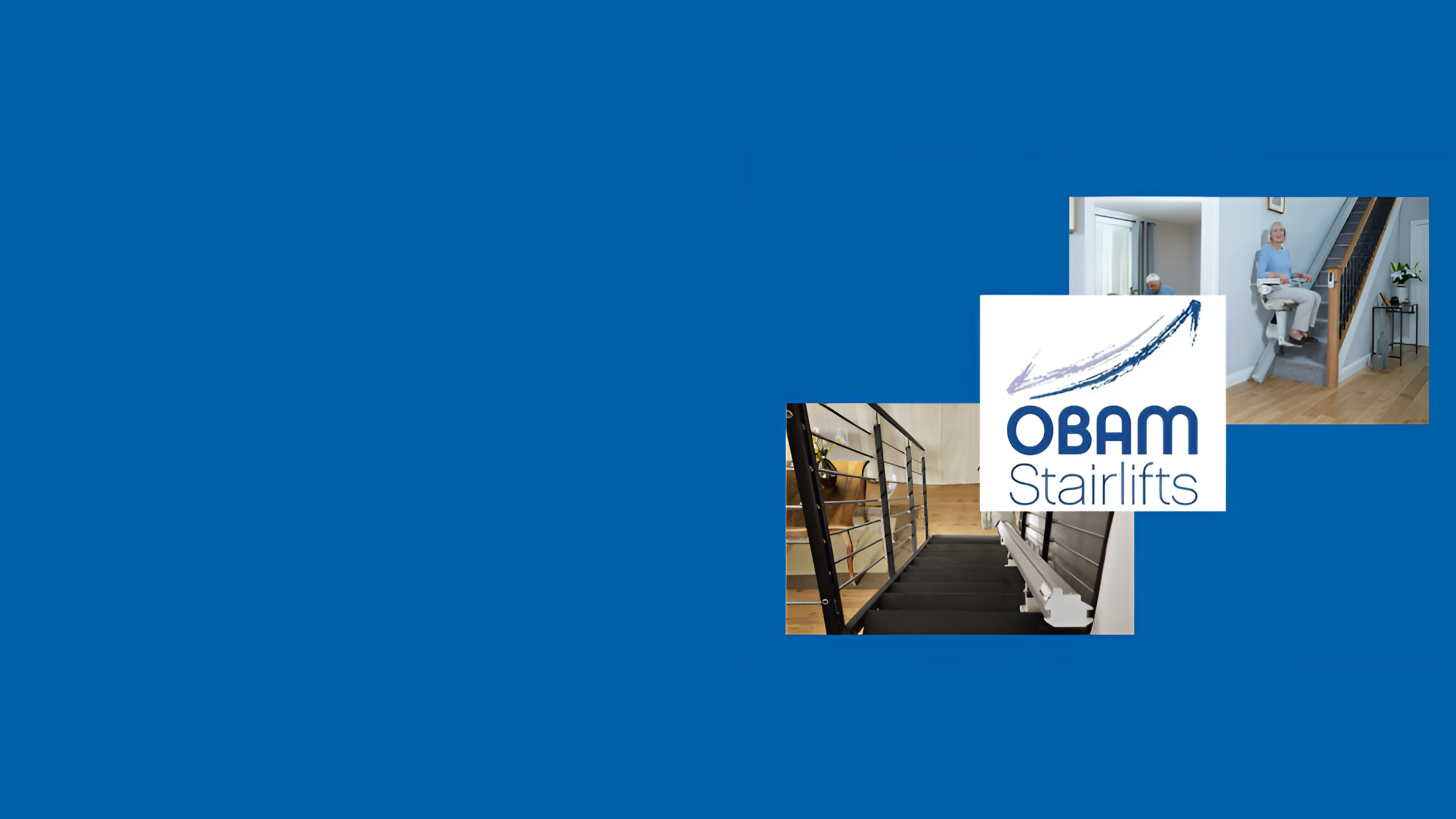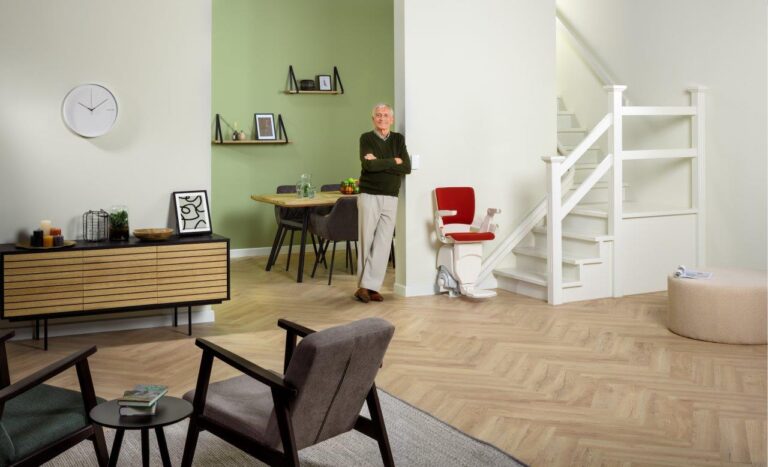Our homes are our sanctuaries in life’s journey, offering comfort and security. However, as we age or face mobility challenges, the spaces that were once realms of ease can become landscapes of obstacles. This change is where the significance of home mobility solutions comes to the forefront, transforming living spaces into environments of accessibility and independence.
Among the myriad mobility solutions, stairlifts and through-floor lifts have emerged as popular and effective options. These innovations are more than just mechanical aids; they are lifelines that reinstate freedom and safety in navigating one’s home. Stairlifts, with their sleek design and straightforward functionality, provide a simple solution for conquering stairs. On the other hand, through-floor lifts offer a more comprehensive approach, allowing a seamless transition between different levels of a home.
The decision between a stairlift and a through-floor lift is not just about choosing a mobility device but a lifestyle. Your preference may depend on various factors, including the layout of your home, your personal mobility needs, and even your aesthetic preferences. We will embark on a journey to compare and contrast these two solutions, exploring their features, benefits, and considerations.
Our objective is to equip you with the knowledge and insights to make an informed decision. Whether you are planning for your own needs or looking to assist a loved one in maintaining their independence at home, understanding the nuances of these mobility solutions will guide you towards making a choice that enhances comfort, safety, and quality of life in your living spaces.
Join us as we navigate the intricacies of stairlifts and through-floor lifts and discover which option best fits your unique needs and home environment.
Exploring Stairlifts
Stairlifts represent a practical and popular solution for overcoming the challenges posed by staircases in homes. They are mechanical devices designed to transport individuals up and down stairs efficiently and safely, providing an essential service for those facing mobility issues. Understanding how stairlifts work and their various types is crucial in evaluating if they are the right choice for your needs.
How Stairlifts Work
- Stairlifts consist of a motorized chair or platform that travels along a rail mounted to the staircase treads. With easy-to-use controls, users can smoothly glide up or down the stairs while seated or, in some models, while standing.
- Safety is paramount, with stairlifts equipped with seat belts, obstruction sensors, and emergency stop buttons. The lifts operate on low voltage, often with battery backup systems, to ensure functionality even during power outages.
Types of Stairlifts
- Straight Stairlifts: The most straightforward and cost-effective models are designed for straight staircases. Straight Stairlifts are easy to install and ideal for standard staircases without turns or landings.
- Curved Stairlifts: Custom-made to fit staircases with bends, turns, or spiral designs. Curved Stairlifts provide a tailored solution for more complex home layouts but are generally more expensive due to the customization required.
- Outdoor Stairlifts: Specifically designed for outdoor use, these stairlifts are built to withstand weather conditions and are perfect for steps leading to gardens, porches, or any outdoor spaces.
Benefits of Stairlifts
- Cost-Effectiveness: Stairlifts are typically more affordable than through-floor lifts or home elevators, making them a cost-effective mobility solution.
- Minimal Structural Changes Needed: Unlike other home modifications, stairlifts require minimal alteration to the existing structure of the home, preserving the integrity and design of your living space.
- Quick Installation: Installation can often be completed within a few hours to a day, providing an immediate solution to mobility challenges.
Potential Drawbacks
- Limited to Staircases: Stairlifts are designed exclusively for use on staircases, which means they are not a solution for moving between floors in homes without staircases or for those who need to transport wheelchairs between levels.
- May Not Suit All Mobility Issues: While stairlifts are ideal for those who can transfer to and from the chair, they may not be suitable for individuals with more severe mobility impairments who cannot leave their wheelchair.
Stairlifts offer a simple, cost-effective, and efficient solution to navigating stairs for those facing mobility challenges. They are an ideal option for many, but it’s essential to consider their limitations and suitability to your specific situation when making your decision.
Exploring Through-Floor Lifts
Through-floor lifts emerge as a beacon of innovation and versatility when transcending barriers within a multi-storied home. These lifts are not merely devices but architectural integrations that enhance the functionality and accessibility of a living space. A through-floor lift creates a vertical passage between floors, essentially acting as a personal elevator within the confines of a home. They have a platform that smoothly ascends and descends through a cut-out in the ceiling/floor, offering a direct and effortless route between levels.
The authentic charm of through-floor lifts lies in their customization potential. They are not a one-size-fits-all solution; through-floor lifts can be tailored to blend seamlessly with your home’s aesthetics. Whether matching the interior design, adjusting the size to fit snug corners, or incorporating specific features like automatic doors and remote controls, these lifts can be personalized to meet individual preferences and requirements. This customization extends to various home designs, from vintage cottages to modern apartments, ensuring that the lift complements the character of your home rather than contrasting it.
The benefits of through-floor lifts are manifold. They cater to a wide range of mobility levels, from those needing wheelchair access to individuals with limited mobility who find stairs challenging. Unlike stairlifts, they do not occupy any space on the staircase, keeping the stairway accessible for other household members. This aspect is particularly beneficial in homes where multiple residents may have varying mobility needs. Moreover, installing a through-floor lift can be a value-adding investment in your property, often seen as a desirable feature for future buyers who may have accessibility needs or anticipate such needs.
However, it’s essential to consider the potential drawbacks. Through-floor lifts generally have a higher price tag than stairlifts, reflecting their more complex installation and customization options. Additionally, installing a through-floor lift requires significant home modifications. The installation involves creating an opening between floors, which may not be feasible in all types of buildings and could require structural reinforcement. This process can be more intrusive and time-consuming, requiring careful planning and professional assessment.
Through-floor lifts offer a sophisticated and highly customizable solution for home mobility, suitable for a wide range of needs and property types. While they present a higher initial investment and require considerable home modifications, the long-term benefits of enhanced accessibility, independence, and property value make them a worthwhile consideration for many.
Comparing The Lifts
Navigating the decision between stairlifts and through-floor lifts involves thoroughly understanding how each stacks up in various key aspects. This comparison aims to unravel these differences, offering clarity and aiding in making a decision that best suits your needs and circumstances.
1. Cost and Funding Options
- Stairlifts are generally cost-effective, with prices varying based on the type (straight or curved). Depending on individual circumstances and regional policies, funding options may include grants, charitable funding, or insurance coverage.
- Through-floor lifts have a higher price tag, reflecting their more complex installation and customization. Funding can be more challenging to secure due to the higher costs. Still, similar funding options as stairlifts are available, sometimes with additional home modification loans or grants.
2. Installation Process and Time
- Stairlifts offer a quicker installation, often taking only a few hours to a day, with minimal structural changes required. The speed of stairlift installation makes stairlifts a convenient option for quick mobility solutions.
- Through-floor lifts require a more extensive installation, typically several days to a week, involving significant home alterations, like floor cut-outs and potential structural reinforcement.
3. Space Requirements and Home Compatibility
- Stairlifts are space-saving as Stairlifts are installed along the existing staircase. They are compatible with most staircases, though curved staircases require more customized solutions.
- Through-floor lifts need adequate space on both floors and a suitable location for the shaft. They demand a larger footprint and might only be feasible in smaller homes or certain building types with significant alterations.
4. Ease of Use and Safety Features
- Stairlifts are user-friendly, with straightforward controls and safety features like seatbelts, obstruction sensors, and swivel seats for easy dismount. However, they may not be suitable for all users, especially wheelchair users.
- Through-floor lifts are also designed with ease of use in mind, often accommodating wheelchairs directly and featuring safety elements like emergency stop buttons and battery backup systems. Their design can be more user-friendly for those with more severe mobility issues.
5. Aesthetics and Impact on Home Design
- Stairlifts are visible in a home, but modern designs have become more aesthetically pleasing and less intrusive. They don’t require significant home redesign and can often be folded away when not in use.
- While requiring significant home modifications, through-floor Lifts can be customized to fit the home’s aesthetic. They can be made to be a feature in themselves or designed to blend in discreetly with the home’s décor.
The choice between stairlifts and through-floor lifts hinges on a balance of cost, installation complexity, space considerations, user needs, and aesthetic preferences. Stairlifts offer a quick, less intrusive, cost-effective solution, ideal for those with less severe mobility issues. While more expensive and requiring significant home alterations, through-floor lifts provide a comprehensive solution suitable for a broader range of mobility needs. They can be a valuable long-term investment in your property.
Making The Right Choice
Choosing between a stairlift and a through-floor lift is more than just a decision about mobility; it’s about enhancing your quality of life in your home. Here’s how you can navigate this crucial decision-making process.
Assessing Personal Mobility Needs and Home Layout
- Start by evaluating the specific mobility challenges faced. Are the mobility issues temporary or long-term? Is the primary user reliant on a wheelchair? These questions will help determine whether a stairlift or a through-floor lift is more appropriate.
- Consider the layout of your home. For a stairlift, you need to assess the type and shape of your staircase. Through-floor lifts require enough space on both levels and might involve more significant structural changes. Ensure the chosen solution fits harmoniously into your home without causing significant disruptions to your living space.
Consulting with Professionals
- It’s highly advisable to consult with stairlift experts. These professionals can assess your situation and provide tailored advice. They can consider the nuances of your mobility needs and how these intersect with your living environment.
- Occupational therapists can also offer insights into potential health and mobility changes in the future, ensuring that the solution you choose is effective now and remains so in the years to come.
Considering Future Mobility Needs and Home Resale Value
- When making your decision, it’s crucial to think ahead. What works for you now might need to be revised in a few years. A through-floor lift, for instance, might be more suitable if you anticipate your mobility decreasing further.
- Also, consider your choice’s impact on your home’s resale value. While a through-floor lift might be a more significant investment, it could also add value to your property, appealing to a broader range of potential buyers, including those with accessibility needs.
By taking a comprehensive and thoughtful approach to this decision, you can ensure that your choice enhances your mobility and enriches your living experience in your home.





